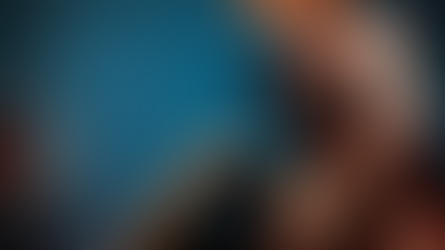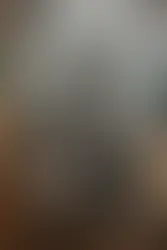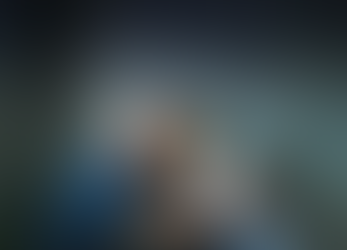A New Artistic Landscape - In Conversation with Alya Hatta
- Ketki Mahabaleshwarkar

- Mar 24, 2021
- 8 min read
This piece originally appeared in the Strand Magazine's 2021 Spring Issue.
When we imagine our post-pandemic world - what social, political, and economic landscape do we see? Visions of crowded streets, bustling bars, and thrumming nightlife; a synesthesia of grit, glamour, and nostalgia that will inevitably arise out of a year spent in lockdown. It’s the common intention to return to life in 20s with the same vigour that was immortalised by the great writers and artists a century before. Where creativity leads, the world surely follows, and so I wondered who (and what medium) would be at the forefront of the roaring decade to come.
Meet Alya Hatta - 21, an artist and creative visionary in London. She uses the medium of paint, canvas, video, audio design, and 3D software to create her colourful visual landscapes and population simulations. In last summer’s Dazed x New Gen Gap campaign, Alya’s work was shortlisted out of hundreds of entries; joining a cohort of six visual artists who were then commissioned to create a unique series of work which reinterpreted GAP products. The campaign called for artists to respond to this question brief: “How is your world changing post-2020?”, and Alya’s response was bold, innovative, and refreshingly self-satirical. “Whatever it is”, a surrealist dance animation, is a sensory concoction of colour, robotic dance moves, and cubic clothing - so, basically, most of our Instagram feeds right now. Humour aside, Alya’s response is intended to be deeply critical of our increased dependence on the internet. She told Dazed that in the video, the Covid-compliant group of 5 figures dancing, “perform to elicit a satirical and false sense of unity and positivity that is heavy in today’s online and offline atmosphere.”
We must then question, not only what our landscape will look like, but what kind of agents we will be in inhabiting it. What will be our communal personality? Will there be a homogenisation of art, visual imagery. and social-culture? —admittedly a destination we are slowly seeing social media creep towards day by day.
I asked Alya these questions, as we connected last December to talk about her journey as a multi-medium artist, creative, and art student. We spoke about identity, comparison culture in the art community, and how our new digital world is making art more accessible.

['Hieronymus Bosch but its the year 3000 and he's an Asian Woman (me)' (2020) by Alya Hatta
Simulation Still | Medium: Generative Simulation (Made with Unity)]
Description: The work is a direct response to living through the isolation of the Covid-19 pandemic. The simulation is random and chaotic and works to no end with an emphasis on a sense of impending doom, the spontaneous aesthetics and the sound created from it.
Q: Tell me about the start of your journey as an artist – how did you get started? What medium did you use?
Alya: I started very young, when my mum used to send me to art classes. So I was born in Malaysia, but I grew up in Saudi Arabia, Dubai, London, Indonesia — all over the place! I properly started doing art in Malaysia due to the nature of my GCSE and A-Level art course where we started off with realism, painting, oil-painting, and then it kind of grew from there! When I came here to England, I had no real concept of what conceptual or fine art was. I was so used to following a particular formula that I learnt in school, and when I did my foundation year. It was very difficult for me to adjust to that kind of painting.

How did your university environment and childhood encourage your creativity?
Actually, what held me back in my foundation year was the environment — it wasn’t really stimulating and there was barely any diversity. I guess there’s two ways to look at it, because it was positive in the sense that I had time to focus on figuring out who I was as a person. I felt so different due to the cultural and racial differences— but that actually influenced me positively because I started looking at my background and my identity in relation to living in England, coming from an ex-colony in Malaysia. I really got to delve into that, and now being in an environment that has people who openly explore racial politics and identity questions has encouraged me in my own identity journey.
The basis of my work is trying to find out my own practise alongside my own identity. [We started talking about how we both felt too“white” for our respective cultures, yet too “foreign” for British culture.] Maybe the ‘solution’ to that is accepting that I’m an individual that has no borders, but at the same time, I have conflict with that because I understand it is a very privileged position to be in, having experienced so many different countries and cultures.
What is your favourite part of exhibitions, and having your work presented in galleries? Because I know you have done international exhibitions, starting off at 17!
It’s interesting, because growing up I was a super ‘straight-As’ kid, so I developed a complex where nothing is ever good enough, or I don’t feel, like, proud of myself when I do achieve these things. I’m always happy in the moment when I get to share my art, but then in my head I’m like, “okay what’s the next thing?; how can I do better?” Being self-critical affects me in good ways and bad ways: I’m always pushing myself but I don’t really stop and take time to think about what I’ve accomplished.

['Aye look Chun-Li back with the big buns' (2021) Installation View, by Alya Hatta | Medium: Oil on Canvas]
Description: "She's the only strong Asian woman that could ever exist, according to The Gym."
I wanted to say congratulations for being one of 6 finalists of the ‘Dazed x Gap New Gen Gap’ initiative! What was that experience like?
Thank you! It was very intense! They sent this email saying that I was the finalist and I didn’t even realise that they had already posted about me on their Instagram. I had 2 weeks to produce a final product. Sometimes, with so much stuff going on, it is difficult to feel like the artist is in control.
Right now, I’m focused on making the best work that I can in my final year, and these competitions and recognitions are like little boosts of motivation when they do come about.
You choreographed a series of dancers, set amongst a surrealist backdrop of the cosmos and almost psychedelic scenes, for an animated short film: Whatever it is. Could you tell me more about the process of imagining and then creating the film?
Because it was the pandemic, I was responding directly to the environment around me, and how I felt during isolation. I guess I wanted to make the project very ‘people-based’. It was weird making the work for a set brief because I don’t usually work with another person in mind or to satisfy a specification. It’s strange because I feel like what I made was a product — and I’ve never really thought of my art in that way. But yeah, I wanted to take the GAP clothing and imagine it in a way that was different; I wanted to take liberties with the styling — not just slap a Gap hoodie on something. I really related it to how I was feeling in the pandemic. Admittedly, there was a kind of pressure to make someone happy. I found myself thinking “oh is this edgy enough?; is it cool enough for Dazed?”

['Whatever it is' (2020) Video Still, by Alya Hatta | Medium: Single Channel Video]
Description: "'Whatever it is' is a direct response to the era of the pandemic, how we cope with current times and what our future could entail. It plays off of the dysfunction of the present by combining a group dance sequence with a host of discombobulated text and visual and audio clips intended to disorientate. These scenes are derived from emotional responses to self-isolation, the realisation of our dependence on the internet and speculation about what direction a pandemic could push our world into."
My favourite thing about the film is how you satirise the false sense of community we feel in the pandemic, through these popularised Tik-Tok dances and challenges. It almost reminds us of how isolating the whole lockdown experience really was. Do you think there was, and still is, a false sense of positivity and unity?
I’m not that up-to-date with British politics, but just seeing Boris Johnson slap on the ‘rule of 6’ , other catchy slogans, and put a rainbow on the NHS, whilst not actually making the key workers’ lives any better, lead me to think of it. I still think there is a sense of false ‘positivity’ and unity, but it’s getting better in different ways. After coming back to the studio and seeing some of my friends, I feel like my world has definitely gotten smaller. I basically go back and forth between my home and the studio. But I guess my world has also expanded, because I now have deeper, richer, and closer relationships with the people around me.
Let’s talk digital – how do you think technology and mass-digitisation has affected the creative community?
I can only speak on my behalf, but it has definitely opened up so many possibilities, just by going from painting to moving image — there’s something about movement and seeing things come to life that painting just can’t easily do. Also, in terms of online shows, it’s amazing for accessibility, and challenging the notion of ‘who gets to view art?’ Gallery spaces can be daunting and unapproachable, so I think digitising exhibitions has been helpful!
Once you have a laptop, you don’t have to spend money repeatedly buying materials. I know the softwares I use; they’re all free! Anyone can use it. Digital spaces have also made it easier for artists to share their work with other people, and there’s a joy that comes from that!
Do you think social media, like Instagram, is integral in the life of a modern artist?
People mainly contact me through Instagram. So if it didn’t exist, a lot of things wouldn’t have happened for me. I treat my Instagram 90% like an artist’s portfolio, and so, I actually think it’s really important for visibility. Saying that, I also understand that it can be a really toxic place and it opens people up to face so much comparison. You find yourself thinking, “oh this person’s making work, should I also be making work?” I would say: take everything with a pinch of salt. It’s a good tool for visibility, finding other artists and people with similar artists. But I do remind myself to have a disconnect from it because Instagram is not representative of real life...at all. It’s all curated so people can show only what they want to show.
Has your artistic work changed in the past seven months?
My work has gotten richer in what it is about, because like I said, I had the time to do some self-reflection about my identity and where I am in the world, where I want to be. I forced myself to use new digital mediums because I didn’t have access to my usual materials. I now use my time to focus on what I want to do.
I think I became a lot more connected to myself over lockdown, and of course, that’s going to translate into the art and make it more meaningful.

['Discovery Channel' (2021) Still of Video Element, by Alya Hatta | Medium: Mixed Media Installation]
Description: The simulation expresses an attempt for the construction of identity through a Southeast Asian lens, drawing on both cultural and religious influences and internal turmoils experienced as a result of the diaspora I've lived through.
I know you share a lot of your 3D and video editing work on Instagram, to produce these larger-than-life landscape illustrations and visuals. Do you have a favourite recent piece?
I really love landscape pieces and population simulation. I recently started making my own music as well! I’m slowly starting to become the artist that I envisioned myself to be, and that’s making me happy! I’m creating my own space and aesthetic. I want my art to be yummy lol.
People say “art imitates life” – is this conveyed in your work?
I’m always trying to put myself into the artwork. There’s no separating it. If I have a bad day, and I come into the studio, even the happiest, colourful painting is going to change. My confusion with my identity and stuff creates a disconnect sometimes, so everything I create in the form of art is trying to bridge that gap. I want to be able to put my name on the artwork and say, this is me.
You can find Alya’s art on www.hatta.studio and @alyahatta on Instagram.
























































Comments